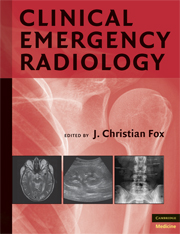Book contents
- Frontmatter
- Contents
- Contributors
- PART I PLAIN RADIOGRAPHY
- 1 Plain Radiography of the Upper Extremity in Adults
- 2 Lower Extremity Plain Radiography
- 3 Chest Radiograph
- 4 Plain Film Evaluation of the Abdomen
- 5 Plain Radiography of the Cervical Spine
- 6 Thoracolumbar Spine and Pelvis Plain Radiography
- 7 Plain Radiography of the Pediatric Extremity
- 8 Plain Radiographs of the Pediatric Chest
- 9 Plain Film Radiographs of the Pediatric Abdomen
- 10 Plain Radiography in Child Abuse
- 11 Plain Radiography in the Elderly
- PART II ULTRASOUND
- PART III COMPUTED TOMOGRAPHY
- PART IV MAGNETIC RESONANCE IMAGING
- Index
- Plate Section
1 - Plain Radiography of the Upper Extremity in Adults
from PART I - PLAIN RADIOGRAPHY
Published online by Cambridge University Press: 07 December 2009
- Frontmatter
- Contents
- Contributors
- PART I PLAIN RADIOGRAPHY
- 1 Plain Radiography of the Upper Extremity in Adults
- 2 Lower Extremity Plain Radiography
- 3 Chest Radiograph
- 4 Plain Film Evaluation of the Abdomen
- 5 Plain Radiography of the Cervical Spine
- 6 Thoracolumbar Spine and Pelvis Plain Radiography
- 7 Plain Radiography of the Pediatric Extremity
- 8 Plain Radiographs of the Pediatric Chest
- 9 Plain Film Radiographs of the Pediatric Abdomen
- 10 Plain Radiography in Child Abuse
- 11 Plain Radiography in the Elderly
- PART II ULTRASOUND
- PART III COMPUTED TOMOGRAPHY
- PART IV MAGNETIC RESONANCE IMAGING
- Index
- Plate Section
Summary
Plain radiography remains the imaging study of choice for most applications in the upper extremity. Far and away, the most common indication for plain radiography in the upper extremity is acute trauma. The shoulder, humerus, elbow, forearm, wrist, and hand are common radiographic series that are useful in diagnosing an acute fracture. Other imaging modalities such as CT, ultrasound, and MRI are not generally indicated in acute trauma, but have an important role in diagnosing soft tissue pathology.
Another common indication for plain radiography of the upper extremity is the search for a foreign body in a wound. Plain films are an excellent modality for the detection of common, dense foreign bodies encountered in wounds, such as glass and rock, but they are much less sensitive in the detection of plastic or organic materials (1). Other imaging modalities such as CT, ultrasound, and MRI are superior for the detection of organic and plastic foreign bodies (2). The principles of using plain films for foreign body detection are similar regardless of the location in the body and are not discussed in further detail here.
In this chapter, the upper extremity is divided into three sections: 1) the shoulder, 2) the elbow and forearm, and 3) the wrist and hand.
Keywords
- Type
- Chapter
- Information
- Clinical Emergency Radiology , pp. 3 - 14Publisher: Cambridge University PressPrint publication year: 2008

